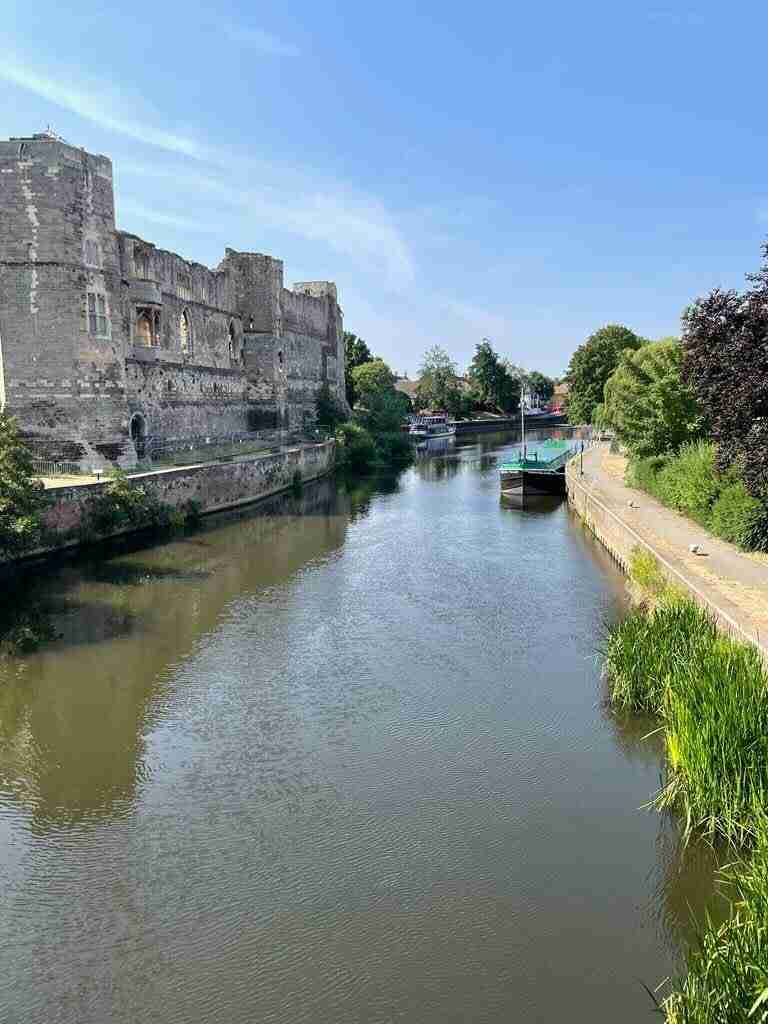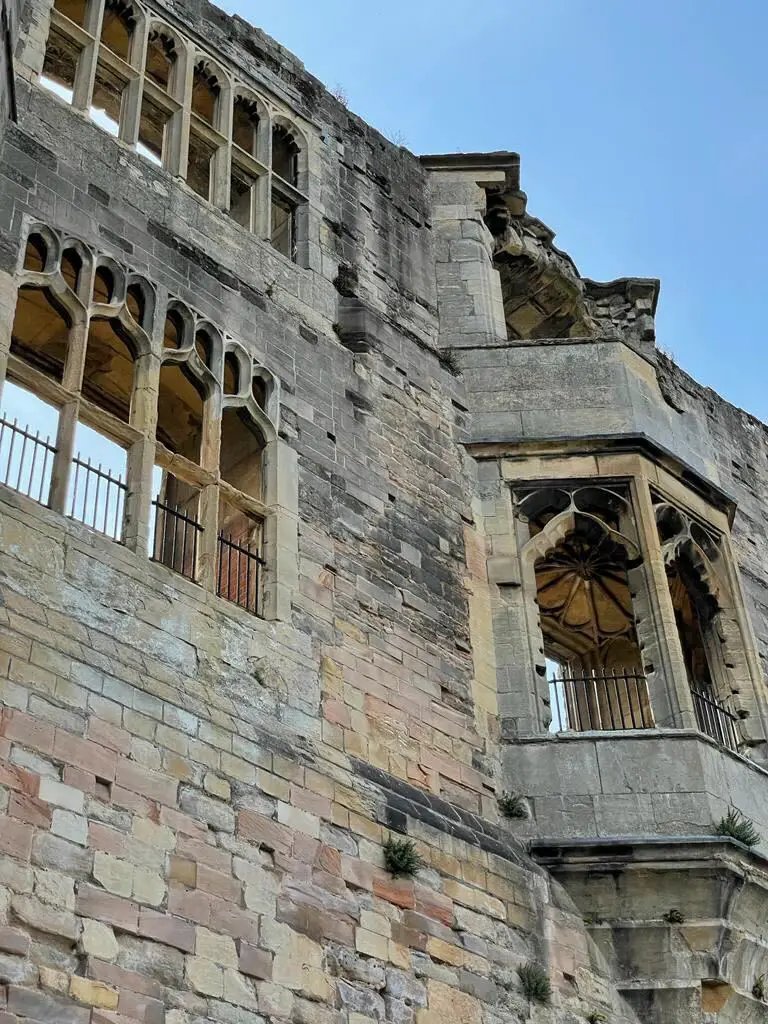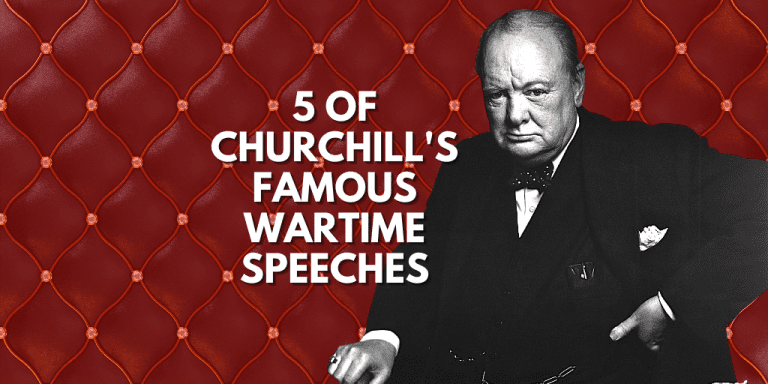Newark Castle – Civil War Stronghold
Newark lies on the road that, during the medieval age, ran between Exeter and Lincoln. Lying at the intersection of the River Trent and the Fosse Way, it played an important role during the Roman occupation before becoming a part of the Kingdom of Mercia in the late 400s and early 500s.
It was hundreds of years on, in 829, that Newark saw King Egbert erect the first fortification here to check the advancing Danes. Despite this measure, the area fell under Danelaw by the end of the century. When the Saxons took it back during the tenth century, it was again established as a fortified town. King Edward the Elder built his Saxon fortified manor house here during the next century, on the site that would later house the castle.

Newark was positioned along the major trade routes that were the Fosse Way and the River Trent remained major trade routes. During the Norman Conquest, invaders took Newark as a tactical communications point that would bring in much-needed taxes. So it was that around 1073 the Bishop of Lincoln, Robert Bloet, constructed an earth and timber motte-and-bailey castle that also ensconced Edward’s manor house.
Alexander, Bishop of Lincoln, saw fit between 1133 and 1148 to replace this original castle with the stone fortification that still stands today. You will notice the unusual layout of the castle, which was indubitably thanks to the arrangement of the motte that surrounded the original castle. These steps taken by Alexander, including the construction of castles at Banbury and Sleaford, caused some suspicion. King Stephen reacted by taking ownership of Newark Castle, which remained in Crown ownership until 1167, when it was restored to the bishop.



The First Barons’ War broke out in 1215 as a result of King John repudiating the Magna Carta. Newark Castle was captured by Gilbert de Gaunt, a rebel baron, but in 1216, Royalist forces took it back. Despite King John’s efforts to give it back to the Bishop of Lincoln in return for his support, it went into custodianship when the Bishop refused to accept the motion. It was, therefore, in the custody of mercenary captain Robert de Gaugy when King John died here on 18 October 1216 following a bout of dysentery while travelling to meet his adversaries. His demise contributed to the ending of the resistance shown by many of the barons and the resultant resolution of the war. Robert de Gaugy had to be forced by a Royal army to cede control of the castle which in 1221 was briefly captured by the rebel William de Forz as part of his rebellion against Henry III.
The early 1300s saw Newark Town Walls rebuilt, some say to strengthen the defences because of a failing relationship with Scotland. Newark Castle, therefore, became less valuable as a fortification and it was modified over time to become more of a residence. One modification in particular to the west wall facing the river was the addition of polygonal towers into which larger windows were later installed.



The English Reformation saw the castle under Crown control in 1547. The ensuing years saw it come under the private ownership of, among others, William Cecil and Lord Burghley. As exchequer to Elizabeth I, he repaired the buildings, restoring them from ruins to residences.
Newark was taken by the Royalists soon after the outbreak of the seventeenth-century Civil War. Due to its location close to key Parliamentary areas in Derbyshire, Leicestershire, and Nottinghamshire, attempts were made by a Parliamentary force under Major-General Thomas Ballard to capture the town. The first, albeit short-lived, siege was on the 27th of February 1643, during which the forces withdrew after coming up against a strong defence.









This was followed a year later, in February 1644, by the second siege of the Civil War. The Royalists had enjoyed a strong position in the North Midlands, where tax revenue had seen significant raises and Parliamentary movements were much disrupted. The forces of William Cavendish, Marquis of Newcastle, provided great impetus to the Royalists’ strength. When he was removed in response to Scotland invading England in January 1644, Parliament dispatched John Meldrum and his force of 6,000 men to take the town. 21 March saw a Royalist force under Prince Rupert engage and defeat Meldrum’s forces. Despite the expectation of a siege against Derby and Nottingham, Prince Rupert withdrew his forces following the withdrawal of the Parliamentary garrison of Lincoln. As a result of the second siege of Newark, two new earthwork forts were constructed to the northeast and southwest of the town. These artillery forts were named the King’s Sconce and Queen’s Sconce.
The Royalists were defeated at the Battle of Marston Moor in July 1644 which led to the third siege of Newark. The Scottish army, together with the northern Parliamentarians, undertook to take York, which led to the King sending Prince Rupert and the Royalist army to relieve the city. The Scottish-Parliamentary force withdrew ahead of his approach, pursued by Prince Rupert, who was defeated. York surrendered on 16 July. Forces from Newark were defeated at Marston Moor, but they successfully recaptured Bolsover and Wellbeck in the summer of 1645.



Newark’s Governor, Lord John Bellasye, refused to surrender to Scottish forces who took up siege positions on 26 November 1645. Earthworks were excavated to surround the town, which was held by 16,000 soldiers, and the corn mills ground to a halt when they dammed the River Devon. Although the works were complete by March 1646, it took the instruction of King Charles, who had surrendered to the Scots at Southwell, for the Governor of Newark to surrender on 27 April 1646.
Following the Civil War, the earthworks surrounding the town were flattened, and Newark Castle was left as an abandoned ruin. The corporation of Newark took ownership of the castle in 1889.






